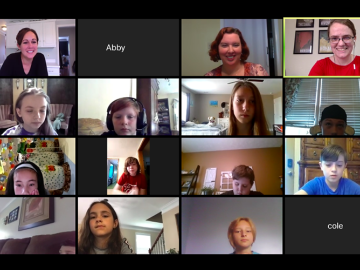
Filter News
Area of Research
- Advanced Manufacturing (4)
- Biological Systems (1)
- Biology and Environment (35)
- Computational Biology (2)
- Computational Engineering (2)
- Computer Science (4)
- Energy Science (30)
- Fusion and Fission (8)
- Fusion Energy (7)
- Isotopes (26)
- Materials (51)
- Materials for Computing (8)
- National Security (18)
- Neutron Science (119)
- Nuclear Science and Technology (19)
- Nuclear Systems Modeling, Simulation and Validation (1)
- Supercomputing (38)
News Type
News Topics
- (-) Advanced Reactors (38)
- (-) Biomedical (72)
- (-) Isotopes (60)
- (-) Machine Learning (67)
- (-) Mercury (12)
- (-) Neutron Science (166)
- 3-D Printing/Advanced Manufacturing (141)
- Artificial Intelligence (129)
- Big Data (75)
- Bioenergy (111)
- Biology (128)
- Biotechnology (39)
- Buildings (70)
- Chemical Sciences (85)
- Clean Water (33)
- Composites (34)
- Computer Science (222)
- Coronavirus (48)
- Critical Materials (29)
- Cybersecurity (34)
- Education (5)
- Element Discovery (1)
- Emergency (4)
- Energy Storage (112)
- Environment (210)
- Exascale Computing (65)
- Fossil Energy (8)
- Frontier (62)
- Fusion (65)
- Grid (72)
- High-Performance Computing (126)
- Hydropower (12)
- Irradiation (2)
- ITER (9)
- Materials (149)
- Materials Science (154)
- Mathematics (12)
- Microelectronics (4)
- Microscopy (55)
- Molten Salt (10)
- Nanotechnology (62)
- National Security (84)
- Nuclear Energy (118)
- Partnerships (68)
- Physics (69)
- Polymers (34)
- Quantum Computing (52)
- Quantum Science (90)
- Security (31)
- Simulation (63)
- Software (1)
- Space Exploration (26)
- Statistics (4)
- Summit (70)
- Transportation (97)
Media Contacts

Researchers at the Department of Energy’s Oak Ridge National Laboratory are refining their design of a 3D-printed nuclear reactor core, scaling up the additive manufacturing process necessary to build it, and developing methods

With Tennessee schools online for the rest of the school year, researchers at ORNL are making remote learning more engaging by “Zooming” into virtual classrooms to tell students about their science and their work at a national laboratory.

In the 1960s, Oak Ridge National Laboratory's four-year Molten Salt Reactor Experiment tested the viability of liquid fuel reactors for commercial power generation. Results from that historic experiment recently became the basis for the first-ever molten salt reactor benchmark.

In the race to identify solutions to the COVID-19 pandemic, researchers at the Department of Energy’s Oak Ridge National Laboratory are joining the fight by applying expertise in computational science, advanced manufacturing, data science and neutron science.

Oak Ridge National Laboratory researchers working on neutron imaging capabilities for nuclear materials have developed a process for seeing the inside of uranium particles – without cutting them open.

A software package, 10 years in the making, that can predict the behavior of nuclear reactors’ cores with stunning accuracy has been licensed commercially for the first time.

A versatile class of flexible, protein-like polymers could significantly advance future drug delivery methods. But first, scientists have to develop a reliable process for tailoring these polymers into shapes that can effectively transport medicines throughout the human body.

Researchers at the Department of Energy’s Oak Ridge National Laboratory have used Summit, the world’s most powerful and smartest supercomputer, to identify 77 small-molecule drug compounds that might warrant further study in the fight

Biological membranes, such as the “walls” of most types of living cells, primarily consist of a double layer of lipids, or “lipid bilayer,” that forms the structure, and a variety of embedded and attached proteins with highly specialized functions, including proteins that rapidly and selectively transport ions and molecules in and out of the cell.



